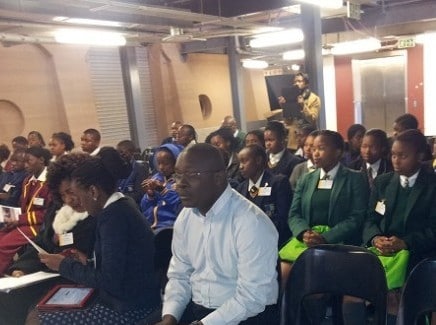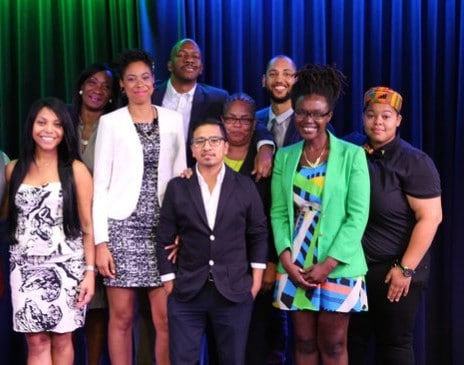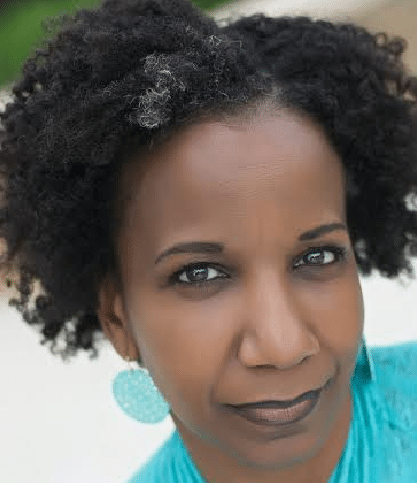Internships have always been a great way for individuals to advance in the professional world. Internships provide skill-building workshops, networking opportunities, monetary benefits and sometimes potential for a full-time position with a company.
For you Blerds out there looking for internships in the STEM (science, technology, engineering and mathematics) fields to help advance your career, here are five STEM internships you should consider.
1. Minority Educational Institution Student Partnership Program
What: MEISPP is a program that is open to high school students and undergraduate/graduate students with a desire to work in the STEM fields. They provide students with an opportunity to work with experts in science and engineering so they can enhance their career and leadership skills. The program targets underrepresented students, like women and minorities, in STEM fields. The research focuses on policy, business and government relations.
Benefits: Students receive paid lodging, round-trip airfare and monetary compensation.
Eligibility Requirements:
- 18 and over
- U.S. citizen
- Earned no less than 24 semester credits hours
- Must be enrolled as a full-time undergraduate or graduate/professional student in an accredited institution of higher education in the fall of 2012
- Maintain an overall grade point average of 2.8 or above on a 4.0 scale
- Applicants must demonstrate the following:
- Leadership potential
- Commitment to public service
- Interest in energy-related issues
- Strong written and verbal communication skills
- Must fill out an application
- Must provide a transcript
- Must have two letters of recommendation
2. Mickey Leland Energy Fellowship Internship Program
What: The Mickey Leland Energy Internship Program was created in honor of the late Texas Congressman Mickey Leland who was a huge proponent of social, cultural and environmental issues. It is a 10-week program that supports underrepresented students in STEM majors by allowing them to work in a mentorship program where they can work with officials whose research falls in line with the Office of Fossil Energy. At the end of the 10 weeks, the students will present their research at a technical forum.
Benefits: Students receive a stipend, housing and transportation
Eligibility requirements:
- Be at least 18 years of age
- Be a U.S. Citizen
- Have a cumulative GPA of at least 3.0
- Be currently enrolled full time in an accredited college or university (sophomore year or higher)
- Participate in the full 10-week program
3. Clean Cities Internships
What: The Clean Cities Internships are unique in that they focus on students who are interested in changing the future of onroad transportation. Students work with Clean Cities Coalition coordinators and stakeholders to plan events, analyze data, research markets and design websites. The program encourages peer exchange, networking, engaging with case studies and doing research. They do hands-on work that involves implementing the use of clean vehicle technologies. Students work toward increasing awareness for things like alternative fuels and the reduction of petroleum. This is all in an effort to improve the overall environment. The internships are available throughout the year.
Eligibility:
- Students who are studying communication, public relations, business marketing, engineering or environmental sciences
- Fill out an online application
4. The Science Undergraduate Laboratory Internships Program
What: The Science Undergraduate Laboratory Internships Program encourages undergraduates interested in STEM careers to apply. The students conduct research at the Department of Energy laboratories (16 locations). The program has three cycles. The summer cycle is a 10-week cycle that starts in May and ends in August. The fall cycle is 16 weeks and starts in August and ends in December. Lastly, the spring cycle, also 16 weeks, begins in January and ends in May.
Benefits: The program provides enrichment activities, professional development and laboratory tours. Students receive a $500 stipend per week. There is opportunity for transportation reimbursement and housing.
Eligibility:
- Must be a U.S. citizen or legal permanent resident
- Must have completed at least one year of school as a matriculating student
- Must be enrolled in an undergraduate program full time
- Must have a 3.0 GPA at the time of applying
5. Minority Serving Institutions Internship Program
What: The Minority Serving Institutions Internship Program is a 10-week summer program that supports undergraduate and graduate students who are high-performing students in the STEM fields. The program provides on-the-job training, opportunities to work on projects in laboratories, federal field offices, etc. Students will be working with some of the nation’s top scientists and engineers. Ultimately, this program allows students to gain experience in their fields of interest so they can make more informed decisions about their futures in STEM.
Eligibility Requirements:
- A United States citizen at least 18 years of age
- Attending a participating MSI
- Enrolled as a degree-seeking student maintaining a minimum of a half-time academic course load (as defined by the educational institution at which the student is enrolled)
- Maintaining a minimum grade point average of 2.5 and be in good academic standing.
- Apply to the program










